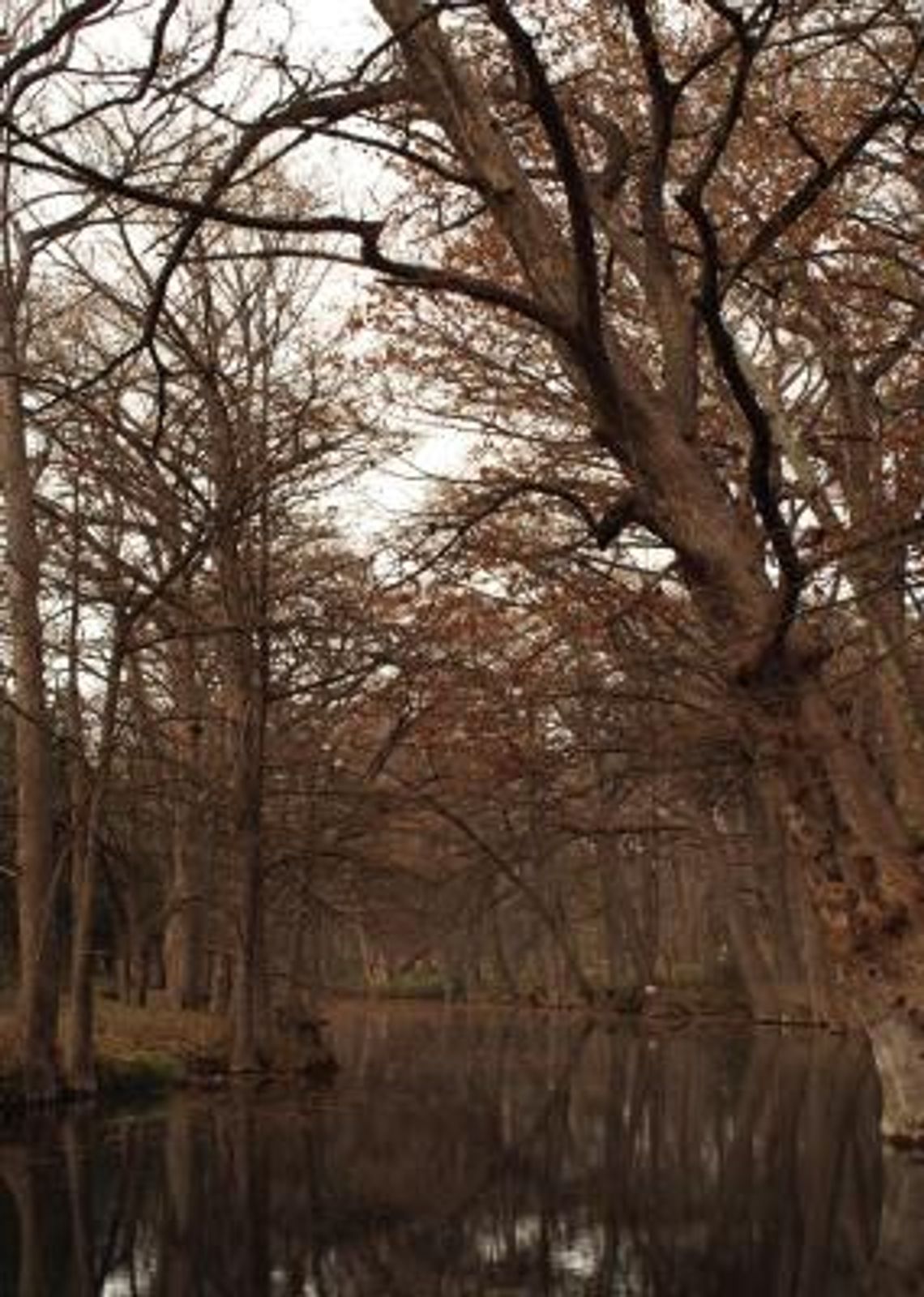Oak wilt, an often-deadly tree fungus, has been found in a corner of Blue Hole Regional Park, according to Wimberley parks and recreation director Richard Shaver.
Shaver made the announcement as part of a budget amendment request for his department at the Wimberley City Council meeting on Thursday, Dec. 1. In order to address the oak tree fungus, Shaver requested — and was granted — $15,000. The department is now selecting contractors to help with the oak wilt mitigation effort.
Blue Hole Regional Park, a natural, spring-fed swimming hole, is mostly known for its iconic cypress trees which line the swimming area. However, as with a large swath of the Texas Hill Country, it is also home to a number of large and established oak trees, many of which are now at risk of contracting oak wilt.
“To be honest, these are century-old oak trees,” Shaver said. “There’s not really a price we wouldn’t pay to keep them. It’s important to do our part to maintain biodiversity.”
The local parks department has chosen to address the issue through a method known as trenching — a process that is pretty much exactly as it sounds.
“Once oak wilt is identified, it is difficult to remedy or save the affected trees,” Shaver explained. “Most of the time, you just have to isolate them and let them die naturally. To do that in Blue Hole, we plan to trench a semicircle connecting 3237 to section off the infected trees.”
Fortunately for the park, the trees affected by oak wilt lie along the southeastern border of Blue Hole, making this method a fairly simple one. However, determining whether this has actually fixed the problem will take time and effort.
“Since we’re a natural park, we didn’t want to use herbicides,” Shaver said. “So, it’s just a waiting game. The whole process is expected to take six months to a year, at which time we’ll have to go back and walk the whole trench, hoping the oak wilt didn’t spread.”
“If it does spread,” Shaver added, “we’ll just have to further the trench line.”
Oak wilt is one of the most destructiv e tree diseases in the United States, according to the Texas A&M Forest Service.
“[This disease] is killing oak trees in central Texas at epidemic proportions,” its oak-wilt webpage reads. “Oak wilt is an infectious disease caused by the fungus Bretziella fagacearum, which invades and disables the water-conducting system (xylem) in oaks. All oaks can be infected by the fungus that causes oak wilt; however, some oak species are affected more than others. The successful management of oak wilt depends on correct diagnosis and an understanding of how the pathogen and different oak species interact.”
For more information on oak wilt in Texas, visit texasoakwilt. org/oakwilt.







